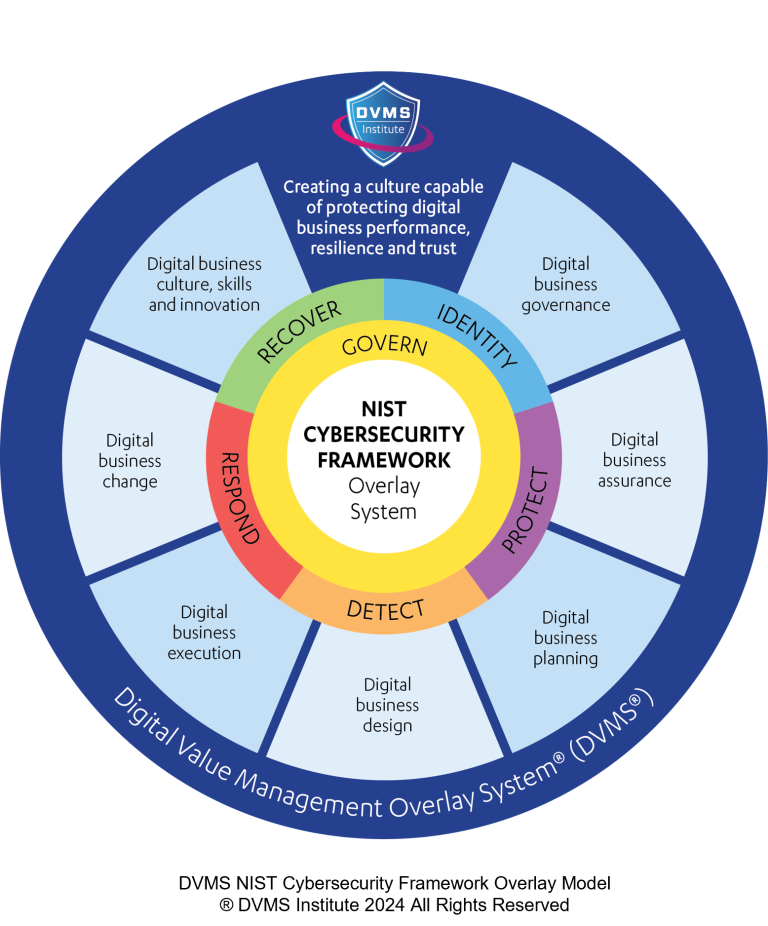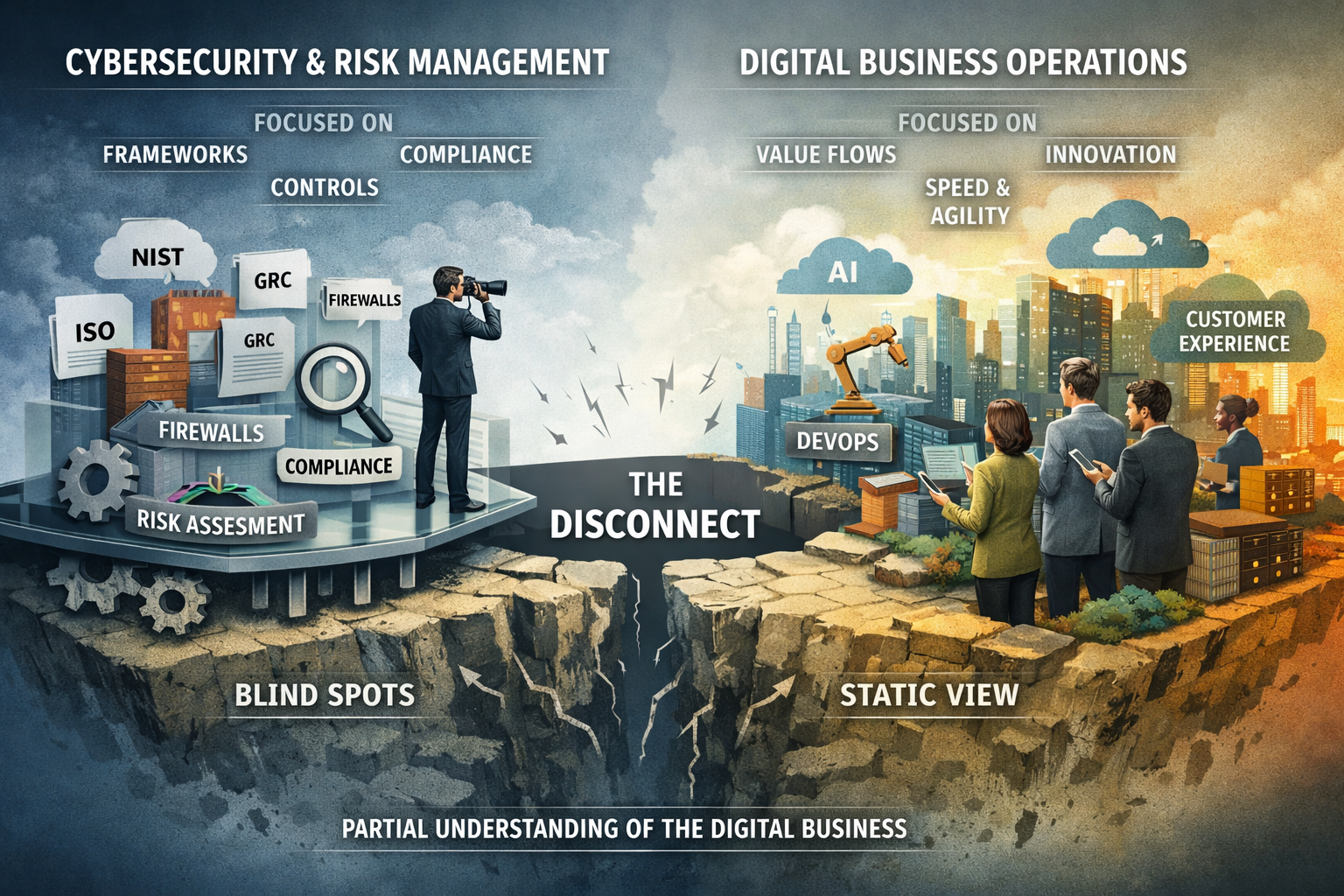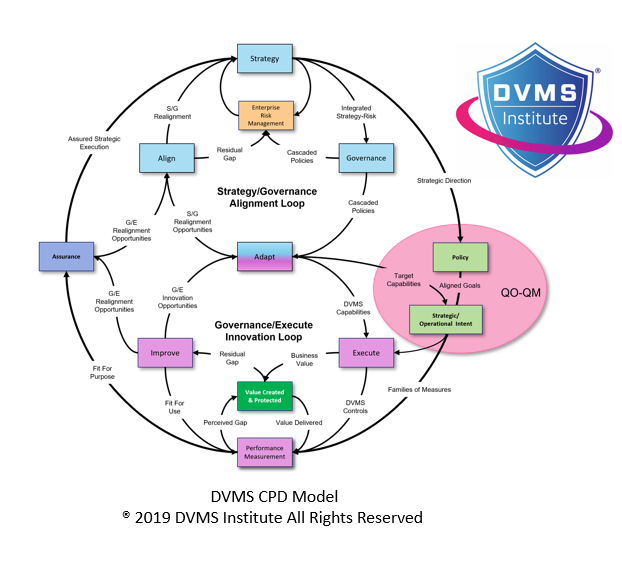Understanding the Interconnectedness of Digital Systems: A Foundation for Organizational Cyber Resilience
Rick Lemieux – Co-Founder and Chief Product Officer of the DVMS Institute
In today’s digital age, organizations rely heavily on interconnected systems to conduct their operations. These systems, comprising hardware, software, networks, and data, are intricately intertwined, forming a complex ecosystem. Understanding the interconnectedness of these systems is essential for organizations to build and maintain strong cyber resilience.
The interconnectedness of digital systems can be likened to a spider web. Each component, or node, is connected to multiple others, creating a network of dependencies. A breach in one node can have cascading effects, compromising the security and functionality of the entire system. For example, a compromised server can expose sensitive data, disrupt critical processes, or lead to a system-wide shutdown.
Recognizing the interconnectedness of digital systems allows organizations to identify potential vulnerabilities and risks that might go unnoticed. By mapping out the dependencies between different components, security teams can assess the potential impact of a breach and develop targeted mitigation strategies. For instance, if an organization understands that a specific application heavily relies on a particular database, it can prioritize the protection of both components to prevent catastrophic failure.
Moreover, understanding the interconnectedness of digital systems is crucial for effective incident response. When a security breach occurs, organizations must be able to isolate the affected system quickly and contain the damage. This requires a deep understanding of the system’s architecture and dependencies to prevent the breach from spreading to other critical components. By having a clear picture of the interconnectedness, organizations can implement containment measures more efficiently and minimize the impact of the incident.
Furthermore, the interconnectedness of digital systems highlights the importance of a holistic approach to cybersecurity. Traditional security measures that focus solely on individual components are no longer sufficient. Organizations must adopt a comprehensive strategy that addresses the entire ecosystem, including hardware, software, networks, and data. This involves implementing various security controls, such as firewalls, intrusion detection systems, encryption, and fostering a solid security culture among employees.
Understanding the interconnectedness of digital systems is a fundamental aspect of organizational cyber resilience. By recognizing the dependencies between different components and adopting a holistic approach to security, organizations can identify vulnerabilities, mitigate risks, and effectively respond to incidents. The interconnected nature of digital systems underscores the need for a comprehensive and proactive cybersecurity strategy to protect critical assets and ensure business continuity.
About the Author

Rick Lemieux
Co-Founder and Chief Product Officer of the DVMS Institute
The DVMS Institute teaches organizations of any size, scale, or complexity an affordable approach to mitigating cyber risk to protect digital business performance, resilience, and trust.
Rick has 40+ years of passion and experience creating solutions to give organizations a competitive edge in their service markets. In 2015, Rick was identified as one of the top five IT Entrepreneurs in the State of Rhode Island by the TECH 10 awards for developing innovative training and mentoring solutions for boards, senior executives, and operational stakeholders.
® DVMS Institute 2024 All Rights Reserved




